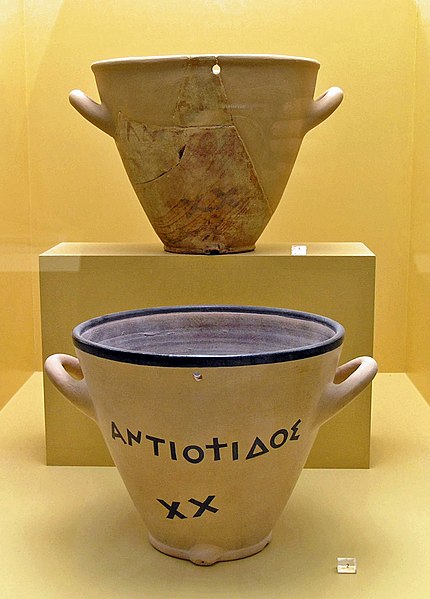History of timekeeping devices
The history of timekeeping devices dates back to when ancient civilizations first observed astronomical bodies as they moved across the sky. Devices and methods for keeping time have gradually improved through a series of new inventions, starting with measuring time by continuous processes, such as the flow of liquid in water clocks, to mechanical clocks, and eventually repetitive, oscillatory processes, such as the swing of pendulums. Oscillating timekeepers are used in modern timepieces.
A marine sandglass. It is related to the hourglass, nowadays often used symbolically to represent the concept of time.
The Sun rising over Stonehenge in southern England on the June solstice
An Ancient Egyptian sundial (Rijksmuseum van Oudheden)
Vrihat Samrat Yantra, 88 feet (27 m) tall sundial at the Jantar Mantar in Jaipur Built in 1727
A water clock or clepsydra is a timepiece by which time is measured by the regulated flow of liquid into or out from a vessel, and where the amount of liquid can then be measured.
Water clock calculations by Nabû-apla-iddina.
A display of two outflow water clocks from the Ancient Agora Museum in Athens. The top is an original from the late 5th century BC. The bottom is a reconstruction of a clay original.
Eschinardi's water clock (Reproduced from Francesco Eschinardi, Appendix Ad Exodium de Tympano)
The water-powered mechanism of Su Song's astronomical clock tower, featuring a clepsydra tank, waterwheel, escapement mechanism, and chain drive to power an armillary sphere and 113 striking clock jacks to sound the hours and to display informative plaques








